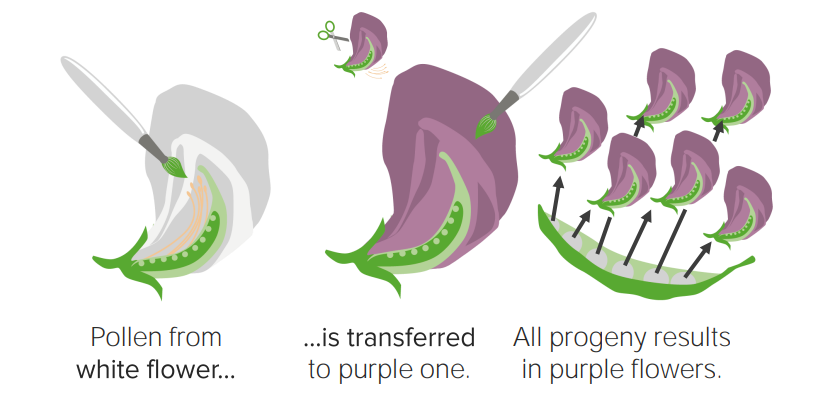Playlist
Show Playlist
Hide Playlist
Genetic Diseases: Categories
-
Slides 01 Introduction IntroductionToMedicalGenetics.pdf
-
Download Lecture Overview
00:00 As we go through this course, I’ll be covering several different categories of genetic diseases. The first category that we’ll look at are chromosomal disorders. These are disorders on the level of the whole chromosome that we can see in visualizing someone’s karyotype. Then we’ll also consider single-gene disorders. 00:23 Single-gene disorders are the ones you’re probably more familiar with from you class in general biology. 00:30 We’ll look at classic inheritance patterns, things that we can predict might happen with a pedigree. 00:37 Then we’ll consider multifactorial disorders. We’re understanding today with our advent in understandings of genomic that multifactorial genetic conditions are the majority of genetic conditions. For example, we are learning a lot more about breast cancer. As we understand that there's a genetic link with breast cancer, not necessarily just BRCA1 and BRCA2, we’re understanding that the environment and so many other factors can affect how and when that disorder might be expressed. So, things are going to get a lot more complicated as we learn more and more that the skills available to us in genetic medicine are going to become much more robust. So when we consider chromosomal disorders, we’re looking at large scale mutations on the chromosomal level. This can involve having a whole extra copy of that chromosome. For example, in trisomy 21, we have three copies. The normal condition, we would just have two copies. That provides just the right amount of gene product. But with three copies, we have an excessive gene product. So really, we’re talking about extents or deficiency in gene products. We don’t see mutation of any individual genes in this case, just this whole segment duplications or deletions or whole chromosome duplications or deletions. 02:06 So, we’ll cover a number of different chromosomal disorders as we dig deeper into the topic. The next category that we’ll look at are single-gene disorders. These are localized, small scale mutations. Things like an addition of one extra nucleotide causing a missense or a nonsense DNA sequence. So that perhaps we have an addition of a different amino acid or replacement of a different amino acid such as the cases we see in some of these disorders like sickle cell disease, cystic fibrosis. All of the ones that you may have heard about in your general biology course are probably single-gene disorders. They all follow a classic Mendelian inheritance pattern such as dominant disorders and recessive disorders or even x-linked disorders. You can see them displayed in pedigrees and assess whether these disorders are going to come about by looking at people’s family histories and producing a pedigree to make predictions. Finally, we’ll spend a lot of time looking at multifactorial disorders. As I mentioned earlier, there are bulk of genetic disorders that turns out are multifactorial. They’re really hard to pin down because so many things come in to impact that disorder. 03:33 The majority of them have a genetic component, of course. Otherwise, they wouldn’t be considered genetic but that component might just be very small. There may be so many other things impacting it like the environment that person grew up in, the family situation, and the epigenetic impacts that that person has experienced during their life. So these naturally don’t fit Mendelian inheritance patterns that we would expect to see with the single-gene disorders. There are so many things that come in to impact multifactorial disorders that it’s often really hard to understand what’s going on. But as we get deeper into the field of genomics and proteomics, then we’ll be able to establish more and more and there’ll be many more categories or opportunities open for treatment of these disorders. Examples of multifactorial diseases include inflammatory bowel diseases, systemic lupus erythematosus or multiple sclerosis. 04:39 So the bottom line is there is an ever expanding database of human genetic variation. Our understanding of genomics will inevitably lead to extensive discovery and development in public health and the availability of tools in the practice of medicine. So, the future of genetic medicine is huge. There are so many technologies becoming available. It’s such an exciting time. So, I hope that you enjoy your study of medical genetics.
About the Lecture
The lecture Genetic Diseases: Categories by Georgina Cornwall, PhD is from the course Introduction to Medical Genetics.
Included Quiz Questions
Which genetic disorders can be seen on pedigrees?
- Single-gene disorders
- Epigenetic disorders
- Multifactorial disorders
- Imprinted disorders
- Chromosomal disorders
Which of the following disorders is CORRECTLY matched to its category?
- Turner Syndrome – Chromosomal disorder
- Sickle Cell Anemia – Multifactorial disorder
- Parkinson's Disease – Single-gene disorder
- Down Syndrome – Multifactorial disorder
- Diabetes – Chromosomal disorder
Which of the following is a type of chromosomal disorder?
- Trisomy 21
- Mutations in individual genes
- Cystic fibrosis
- Sickle cell disease
- Diabetes mellitus
Customer reviews
5,0 of 5 stars
| 5 Stars |
|
5 |
| 4 Stars |
|
0 |
| 3 Stars |
|
0 |
| 2 Stars |
|
0 |
| 1 Star |
|
0 |






